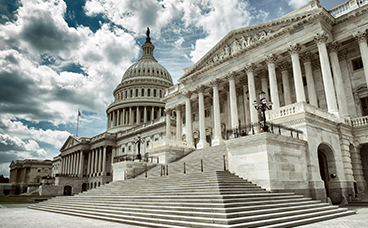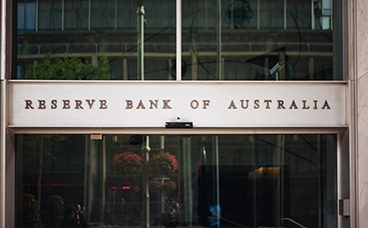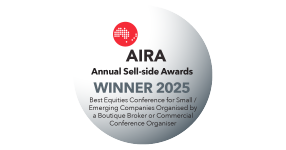Companies under coverage
Explore the stocks under coverage of our award-winning in-house research team.

Companies under coverage
Australia



ALS Ltd (ALQ)
APA Group Stapled (APA)
ARB Corporation (ARB)
Accent Group Ltd (AX1)
Acrow Limited (ACF)
Adairs Limited (ADH)
Adrad Hldings (AHL)
Alliance Aviation (AQZ)
Ama Group Limited (AMA)
Amcor
Amotiv (AOV)
Articore Group Ltd (ATG)
Atlas Arteria Sforus (ALX)
Aurizon Holdings Ltd (AZJ)
Avada Group Limited (AVD)
Baby Bunting Grp Ltd (BBN)
Bapcor Limited (BAP)
Beacon Lighting Grp (BLX)
Bega Cheese Ltd (BGA)
Brambles Limited (BXB)
Breville Group Ltd (BRG)
Brickworks Limited (BKW)
Camplifyholdings (CHL)
Civmec Limited (CVL)
Cleanaway Waste Ltd (CWY)
Coles Group (COL)
Collins Foods Ltd (CKF)
Corp Travel Limited (CTD)
DGL Group Limited (DGL)
Dalrymple Bay Stapled (DBI)
Domino Pizza Enterpr (DMP)
Eagers Automotive (APE)
Elders Limited (ELD)
Endeavour (EDV)
Experience Co Ltd (EXP)
Flight Centre Travel (FLT)
Graincorp Limited (GNC)
Guzman Y Gomez Ltd (GYG)
Hancock & Gore Ltd (HNG)
Helloworld Travl Ltd (HLO)
Idp Education Ltd (IEL)
Inghams Group (ING)
Iph Limited (IPH)
JB Hi-Fi Limited (JBH)
James Hardie Indust Cdi 1:1 (JHX)
Johns Lyng Group (JLG)
Kelly Partners Group (KPG)
LGI Limited (LGI)
Lindsay Australia (LAU)
Lovisa Holdings Ltd (LOV)
MAAS Group Holdings (MGH)
Monadelphous Group (MND)
Motorcycle Holdings (MTO)
Myer Holdings Ltd (MYR)
Nrw Holdings Limited (NWH)
Ntaw Holdings Ltd (NTD)
Nufarm Limited (NUF)
Orica Limited (ORI)
Orora Limited (ORA)
PWR Holdings Limited (PWH)
Peoplein Limited (PPE)
Peter Warren (PWR)
Qantas Airways (QAN)
Reece Limited (REH)
Regal Partners Ltd (RPL)
Reliance Worldwide (RWC)
Shine Justice Ltd (SHJ)
Silk Logistics (SLH)
Sks Tech Group Ltd (SKS)
Smartgroup
Soul Pattinson (Wh) (SOL)
Srg Global Ltd (SRG)
Step One Limited (STP)
Super Ret Rep Ltd (SUL)
Tasmea Limited (TEA)
The A2 Milk Company Nz (A2M)
Tourismholdings Nzx (THL)
Transurban Group Stapled (TCL)
Treasury Wine Estate (TWE)
Universal Store (UNI)
Veem Ltd (VEE)
Ventiaservicesgroup (VNT)
Viva Leisure Limited (VVA)
Vulcan Steel (VSL)
Wagners Hld Company (WGN)
Web Travel Group Ltd (WEB)
Webjet Group Limited (WJL)
Wesfarmers Limited (WES)
Woolworths Group Ltd (WOW)
Worley Limited (WOR)


ANZ Group Holdings (ANZ)
ASX Limited (ASX)
Bank Of Queensland (BOQ)
COG Financial Services (COG)
Cedar Woods Prop (CWP)
Centuria I Reit Ord Units (CIP)
Centuria Office Reit Ord Units (COF)
Chalice Mining Ltd (CHN)
Challenger Limited (CGF)
Clearview Wealth Ltd (CVW)
Commonwealth Bank (CBA)
Computershare Ltd (CPU)
Credit Corp Group (CCP)
Cromwell Prop Stapled (CMW)
Dexus Conv Ret Reit Stapled (DXC)
Dexus Industria Reit Stapled (DXI)
Earlypay Ltd (EPY)
Eureka Group Ltd (EGH)
Findi Limited (FND)
GQG Partners (GQG)
Garda Prpty Group Stapled (GDF)
Generation Dev Group (GDG)
Goodman Group (GMG)
HMC Capital Limited (HMC)
HUB24 Ltd (HUB)
Healthco Healthcare and Wellness REIT (HCW)
Homeco Daily Needs Ord Units (HDN)
Hotel Property Stapled (HPI)
Income Asset (IAM)
Insurance Australia (IAG)
Judo Cap Holdings (JDO)
Kina Securities Ltd (KSL)
MA Financial Group (MAF)
Macquarie Group Ltd (MQG)
Magellan Fin Grp Ltd (MFG)
Medibank Private Ltd (MPL)
Moneyme Limited (MME)
NIB Holdings Limited (NHF)
National Aust Bank (NAB)
National Storage Stapled (NSR)
Netwealth Group (NWL)
Pexagroup (PXA)
Pinnacle Investment (PNI)
QBE Insurance Group (QBE)
Qualitas Limited (QAL)
Solvar Limited (SVR)
Suncorp Group Ltd (SUN)
Tyro Payments (TYR)
Waypoint Reit Stapled (WPR)
Westpac Banking Corp (WBC)


Ansell Limited (ANN)
Aroa Biosurgery (ARX)
Audeara (AUA)
Avita Medical Cdi 5:1 (AVH)
CSL Limited (CSL)
Clarity Pharma (CU6)
Clever Culture (CC5)
Clinuvel Pharmaceut (CUV)
Cochlear Limited (COH)
Cogstate Ltd (CGS)
Control Bionics (CBL)
Dimerix Ltd (DXB)
EBR Systems (EBR)
Ebos Group Ltd Nz (EBO)
Emvision Medical (EMV)
Healius (HLS)
Imexhs Limited (IME)
Impedimed Limited (IPD)
Imricor Med Sys Cdi Forus (IMR)
Mach7 Tech Limited (M7T)
Medadvisor Limited (MDR)
Micro-X Limited (MX1)
Microba Life Sciences (MAP)
Monash IVF Group Ltd (MVF)
Nanosonics Limited (NAN)
Neuren Pharmaceut Nz (NEU)
Neurizon Therapeutic (NUZ)
Opthea Limited (OPT)
Polynovo Limited (PNV)
Pro Medicus Limited (PME)
Proteomics Int Lab (PIQ)
Ramsay Health Care (RHC)
Resmed Inc Cdi 10:1 (RMD)
Sigma Health Ltd (SIG)
Sonic Healthcare (SHL)
Syntara Limited (SNT)
Tetratherix Limited (TTX)
Vitrafy Life Science (VFY)


Adriatic Metals Cdi 1:1 (ADT)
Aeris Resources Ltd (AIS)
Astron Ltd (ATR)
Ausgold Limited (AUC)
BHP Group Limited (BHP)
Beach Energy Limited (BPT)
Bowen Coal Limited (BCB)
Catalyst Metals (CYL)
Comet Ridge Limited (COI)
Coronado Global Res Cdi 10:1 (CRN)
Deep Yellow Limited (DYL)
EQ Resources (EQR)
Elementos Limited (ELT)
Evolution Mining Ltd (EVN)
Fortescue Ltd (FMG)
Gold Hydrogen (GHY)
Imdex Limited (IMD)
KGL Resources Ltd (KGL)
Karoon Energy Ltd (KAR)
Liontown Resources (LTR)
MLG Oz Ltd (MLG)
Matrix Composites & Engineering (MCE)
Medallion Metals (MM8)
Meeka Metals Limited (MEK)
Mineral Resources (MIN)
Mitchell Services (MSV)
New Hope Corporation (NHC)
Newmont Corporation Cdi 1:1 (NEM)
Northern Star (NST)
Novonix Limited (NVX)
Omegaoilgaslimited (OMA)
Pantoro Gold Limited (PNR)
Pilbara Min Ltd (PLS)
Regis Resources (RRL)
Rio Tinto Limited (RIO)
Sandfire Resources (SFR)
Santos Ltd (STO)
South32 Limited (S32)
Stanmore Resources (SMR)
Sunstone Metals Ltd (STM)
Tesoro Gold Ltd (TSO)
True North Copper (TNC)
Turaco Gold Limited (TCG)
Vysarn Ltd (VYS)
Whitehaven Coal (WHC)
Woodside Energy (WDS)


Ai-Media Technologie (AIM)
Airtasker Limited (ART)
Aristocrat Leisure (ALL)
Attura (ATA)
Betr Entertainment (BBT)
Car Group Limited (CAR)
Data#3 Limited (DTL)
Firstwave Cloud Tech (FCT)
Frontier Digital Ltd (FDV)
Intelligent Monitoring Group (IMB)
Iress Limited (IRE)
Jumbo Interactive (JIN)
Light & Wonder Inc Cdi 1:1 (LNW)
Megaport Limited (MP1)
Nextdc Limited (NXT)
Objective Corp (OCL)
Rea Group (REA)
Readytech Holdings (RDY)
Seek Limited (SEK)
Siteminder (SDR)
Superloop Limited (SLC)
Swoop Holdings Ltd (SWP)
Tabcorp Holdings Ltd (TAH)
Technology One (TNE)
Telstra Group (TLS)
The Lottery Corp (TLC)
The Star Ent Grp (SGR)
Tpg Telecom Limited (TPG)
Wisetech Global Ltd (WTC)
Xero Ltd (XRO)


Adobe Systems Inc (ADBE.NAS)
Alphabet Inc (GOOGL.NAS)
Amazon Inc (AMZN.NAS)
Apple Inc (AAPL.NAS)
Berkshire Hathaway Inc (BRK.B.NYS)
Chipotle Mexican Grill Inc (CMG.NYS)
Cisco Systems Inc (CSCO.NAS)
Constellation Software Inc/Canada (CSU.TSX)
Eli Lilly & Co (LLY.NYS)
Freeport-Mcmoran Inc (FCX.NYS)
General Motors Co (GM.NYS)
Global Business Travel Group I (GBTG.NYS)
Honeywell International Inc (HON.NAS)
Johnson & Johnson (JNJ.NYS)
Linde Plc (LIN.NAS)
Mastercard Inc (MA.NYS)
Mcdonald'S Corp (MCD.NYS)
Meta Platforms Inc A (META.NAS)
Microsoft Corp (MSFT.NAS)
Netflix Inc (NFLX.NAS)
Nike Inc (NKE.NYS)
Nvidia Corp (NVDA.NAS)
Paypal Holdings Inc (Usa) (PAYPAL)
Pfizer Inc (PFE.NYS)
Rtx Corp (RTX.NYS)
Salesforcecom Inc (CRM.NYS)
Sharkninja Inc (SN.NYS)
Starbucks Corp (Us) (STARBU)
Tesla Inc (TSLA.NAS)
Visa Inc (Usa) (VISAIN)
Walt Disney Co/The (DIS.NYS)


Alibaba Group Holding Ltd (9988.HKE)
Tencent Holdings Ltd (0700.HKE)


Astrazeneca Plc (AZN.LSE)
Diageo Plc (DGE.LSE)
Glencore Plc (GLEN.LSE)
Hennes & Mauritz Ab (HM-B.STO)
Hermes International (Eur) (HERMES)
Industria De Diseno Textil Sa (ITX.MAD)
LVMH Moet Hennessy Louis Vuitton Se (LVMH.MTA)
Nestle Sa (Switz) (NESTLE)
Novo Nordisk A/S (NOVO-B.CSE)
Roche Holding Ag (ROG.SWX)
Shell Plc (SHEL.LSE)
Siemens Ag (SIE.ETR)
News & insights
Beware the US Shutdown!
Beginning on the 1st of October 2025, the US government began its current Federal government shutdown.
The shutdown occurred because Democratic Party Senators refused to support a Continuing Resolution to provide funding for the US government. At the time of writing, Republican Senators have now put up Continuing Resolutions for funding to the Senate 11 times, and Democrat Senators have refused to support them 11 times.
The more I look at this shutdown, the more it is apparent that Democratic planning for the shutdown really began in July, following the passage of the One Big Beautiful Bill.
A good start to understanding the Democratic Party’s decisions can be gained by reading a paper published on 22 July by University of California Berkeley Public Health Professor William H. Dow. The paper is titled “What do looming cuts to Medicaid really mean?”
Although the article is about Medicaid, Dow briefly mentions the expiry of subsidies to the Affordable Care Act (Obamacare insurance). Dow downplays this as a cause of the shutdown. We cover this issue in an appendix.
Berkeley is particularly interesting because it's in California’s 12th Congressional District. This was one of the long-time districts held by Nancy Pelosi, who resigned as Speaker of the House at the beginning of 2023. So it's really Democratic Party heartland.
In this paper, Professor Dow argued that the One Big Beautiful Bill signed into law by Trump on the 4th of July 2025 cuts funding to Medicaid by $100 billion per year. The source document he uses was published by the Kaiser Family Foundation.
When I looked at the source document, it actually says $99 billion per year. Dow rounded it up. We'll draw some analysis from that source document later. For now, we’ll say the cut is $99 billion a year, over the next ten years, continuously.
Medicaid is intended to provide basic health care for the poor. It’s funded by the federal government, but services are provided at the state level. In every state, the agency has a different name. The Congressional Budget Office tells us that in 2023, the total cost of Medicaid was $870 billion.
That means spending on Medicaid is equal to or greater than the GDP of around 170 countries. Only about 20 countries have a larger GDP than the annual US spending on Medicaid.
When we look at that spending, American seniors and disabled people were 21% of enrollees but accounted for 52% of the spending. Children were 37% of enrollees but only 15% of the spending. Professor Dow’s paper shows that Medicaid is important, particularly for understanding the politics around what he calls “Undocumented Immigrants.”
We’ll talk later about Speaker of the House Mike Johnson’s discussion of the same group. He calls them “Illegal Aliens.”
This is interesting. I’ve seen polling about the use of these terms. Roughly twice as many Americans use the phrase “illegal aliens” as use “undocumented immigrant”. But “undocumented immigrant” is heavily used in Democratic Party heartland, especially in California, where Professor Dow is based, and in New York State.
Again, Medicaid is intended to provide basic health care for the poor. The program is federally funded but state-administered. Speaker Mike Johnson, speaking on the 1st of October, said that “Medicaid was intended for people in distress, young pregnant women or men who were down on their luck, the destitute and disabled, and the elderly.”
The sources of the savings in Medicaid spending when the bill was passed on the 4th of July came from two areas: identification of recipients as American citizens, and the use of a “work test”.
Republicans tried to reduce benefits to American citizens only. That’s what they’re attempting to do.
Democrats, on the other hand, would like benefits to continue to be extended, officially or unofficially, to illegal aliens or undocumented immigrants.
Let’s talk about “The identification of American citizens”.
This involves people receiving benefits, or the adults in the family, turning up once a year at the state agency and identifying themselves in person. Earlier analysis by DOGE showed a number of invalid claims in Medicaid and other federal benefits.
There were people receiving benefits who had been dead for years, and others who had yet to be born. So Republicans included a condition in the bill that recipients must turn up at the agency once a year and prove they are American citizens.
That would exclude illegal aliens from receiving payments.
There’s also a work test for people receiving medical benefits. If you’re between 19 and 64 years of age and want to receive Medicaid benefits, you must prove you’re working at least 80 hours per month or attending an educational institution for that period.
When the bill became law, it was said these provisions would reduce Medicaid spending by 15%.
Professor Dow based his paper on research from the Kaiser Family Foundation. I examined the same document. It says the reduction is $99 billion a year. As a percentage of the total $870 billion spending, that’s exactly 11.4%, not 15%.
Still, the apparent intent of the Democratic Party is to continue the shutdown until these savings are reversed.
The previous experience of a shutdown was during Trump’s first term. Trump himself shut down a spending bill until it included funding for the border wall. That shutdown lasted 35 days. The result was that Trump’s favourability ratings fell dramatically.
So I think Democrats started this shutdown assuming the same would happen again, that Trump would be blamed, and it would be a political advantage to have a long shutdown.
Unfortunately for them, recent polling by Rasmussen suggests Trump is rating well.
There was a “No Kings” national protest aimed at Trump held on the 18th of October in all 50 states. This shutdown appears to have been planned to coincide with those demonstrations.
This suggests Democrats planned this as a long-term shutdown.
So what could possibly go wrong?
First up, China is using the US shutdown to launch aggressive demands for control of world trade in return for rare earths.
From an economic point of view, a paper published by Standard & Poor’s titled “The rising risk of a prolonged shutdown” is worth noting. The previous longest shutdown was 35 days, or five weeks.
It’s quite possible this one will go longer. The paper calculates that each two weeks of shutdown reduces final quarter GDP by 0.3%. We believe the shutdown will last at least four weeks. That would reduce fourth quarter GDP growth from the current estimate of 2% annualised to 1.4%.
The long-term bond market appears to believe this. In recent weeks, 10-year bond yields have fallen by 10 basis points. I think there’s more to come.
This shutdown may continue for a while. It’s good advice to exercise caution and wait until the shutdown ends. This story still needs time to unfold.
Investment Watch is a quarterly publication produced by Morgans that delves into key insights for equity and economic strategy.
This publication covers
Economics - 'A comparative outlook on the Fed and RBA'
Asset Allocation - 'Countering uncertainty'
Equity Strategy - 'Broadening our portfolio exposure'
Banks - 'Price strength compresses potential returns'
Industrials - 'Wild swings'
Resources and Energy - 'Sentiment turning'
Technology - 'Buy quality when opportunities arise'
Consumer Discretionary - 'Encouraging medium-term signs'
Telco - 'Defensive attributes remain attractive'
Infrastructure - 'Attractive, but with limited opportunities'
Property - 'An improving cycle'
Recent Intiations
As we approach Q4, we maintain our positive view on investment markets, grounded in the expectation of slowing but still positive global growth. The shift in market dynamics is driven by the resumption of US Fed rate cuts and the continued acceleration of tech innovation and productivity gains. We think these factors will mitigate the impact of ongoing economic challenges and geopolitical volatility. This quarter, we map the outlook for interest rates and how this shapes our asset allocation decisions. We also provide an outlook for the key sectors of the Australian market and where we see the best tactical opportunities
Morgans clients receive exclusive insights such as access to our latest Investment Watch publication. Contact us today to begin your journey with Morgans.
Each quarter, the Australian Financial Review conducts a comprehensive survey involving 39 economists who provide forecasts on key indicators such as GDP, the Australian dollar, the cash rate, and core inflation. Over the past two years, the AFR has also ranked these economists based on the statistical accuracy of their predictions. I have been fortunate to be included in the top ten for both years.
In this article, I will share my own views on the economic outlook, as published in the AFR survey, alongside insights from two other top-ten contributors. One represents a major bank and the other a leading financial institution.
Starting with GDP, my forecast for 2025 is 1.7 percent growth. This matches the major bank’s projection. The financial institution is slightly more optimistic, forecasting 1.8 percent. These figures suggest a broadly consistent view of modest growth.
By mid-2026, growth is expected to pick up. I am slightly more conservative than the others, forecasting 1.9 percent for the year to June. For the year to December 2026, I anticipate growth of 2 percent, while the bank and institution forecast 2.2 and 2.3 percent respectively.
This divergence in growth estimates likely reflects differing views on productivity. In the first quarter of this year, most GDP growth came from the public sector, resulting in very low productivity growth of just 0.30 percent. As growth shifts toward the private sector, productivity should improve. However, I expect less private-sector-driven growth, which informs my more cautious forecast. I also anticipate that employment growth will be driven more by Federal government spending and public sector hiring.
Turning to the Australian dollar, I hold a more optimistic view than the other two contributors. I forecast the dollar to reach 68 US cents by the end of this year and 70 US cents by mid-next year. The major bank expects 67 US cents and then 68 US cents, while the institution forecasts 67 US cents and 69 US cents. My outlook on the Australian dollar is based on the belief that Australia’s rate cuts are nearing completion, while the United States is just beginning its rate-cut cycle.
I have previously stated that the Federal Reserve funds rate could fall to 3.35 percent, assuming it stops at neutral. However, if the U.S. economy weakens, which is likely in a midterm election year, the Fed may cut rates more aggressively. Additionally, the inflationary impact of tariffs is expected to fade next year, leading to a significant drop in U.S. inflation by mid-2026. This could prompt the Fed to cut rates below neutral, weakening the U.S. dollar and strengthening the Australian dollar.
Six months ago, I was asked whether it was worth hedging the Australian dollar. At the time, I said no, as I expected more rate cuts in Australia than in the U.S. Now, with Australia’s rate cuts coming to an end and the U.S. just beginning, it is an opportune time to consider hedging the Australian dollar against the U.S. dollar.
Regarding the cash rate, I expect trimmed mean inflation to fall to 2.5 percent in the ABS estimate for the CPI released on 29 October. If this occurs, the Reserve Bank of Australia could cut the cash rate once more to 3.35 percent by year-end. If inflation does not fall, rates are likely to remain unchanged.
Interestingly, the major bank expects rates to fall not only in December but again by June next year. The financial institution sees no cut this year but expects rates to fall to 3.35 percent by mid-next year. Again, Australia is nearing the end of its rate-cut cycle, while the U.S. is just beginning its own rate cut cycle.
On inflation, I believe the RBA can only cut rates if quarterly inflation falls to 2.5 percent. I forecast this inflation number by December and again by mid-next year. The major bank expects core inflation to be 2.6 percent in both periods, which I believe is too high to justify rate cuts. The institution forecasts 2.9 percent inflation by year-end and 2.7 percent by mid-next year, which also seems inconsistent with a rate-cut scenario. These differences highlight varying interpretations of inflation data.
I have previously noted that the RBA places greater emphasis on the quarterly trimmed mean than the monthly CPI. Governor Michelle Bullock confirmed this in her recent media briefing, stating that while the RBA is transitioning to monthly CPI, it will continue to request quarterly trimmed mean data. This is because the quarterly measure provides a more accurate reflection of services inflation. While monthly CPI may be published, the quarterly trimmed mean will remain central to the RBA’s decisions on the cash rate.










